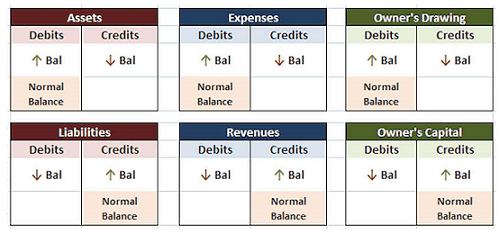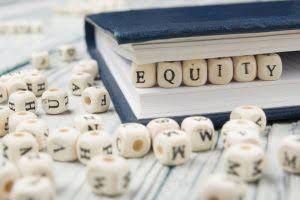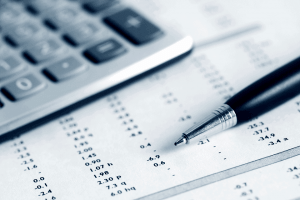This template is the perfect tool to help you verify the accuracy of your company’s account balances compared to bank figures and ensure the integrity of your general ledger. The GL serves as the basis for https://megamasterok.ru/top-10-programm-dlja-3d-dizajna-interera-vybirajte.html a company’s income statements, balance sheets, and cash flow statements. By keeping your general ledger up-to-date, stakeholders, investors and analysts can accurately assess the company’s performance. As your company grows, you can use the GL to track where your money is going and where it is coming from, using this data to make future business decisions. A general ledger is an accounting tool that companies use to organize and maintain their financial records.
Retail businesses
It is used to keep track of the cash balance and to reconcile bank statements. In bookkeeping and accounting, a subsidiary ledger is a ledger that contains detailed information about a specific type of transaction or account. It is used to support the information contained in the general ledger and is often referred to as a subledger or sub-ledger. It is important to note that debits and credits do not always correspond to positive or negative values. For example, a debit to a cash account represents an increase in cash, while a debit to an accounts payable account represents a decrease in the amount owed. General ledgers are essential as they help you record all your financial transactions.
How does a general ledger work in double-entry accounting?
This is because owners and the outsiders are the ones who go in for providing such resources. Plugging every individual A/P transaction into the general ledger would clutter it too much, so the A/P subledger is used instead. A sales ledger is a detailed list in chronological order of all sales made. This ledger is often also used to keep track of items that reduce the number of total sales, such as returns and outstanding amounts still owed. HighRadius Record to Report (R2R) solutions transform general ledger processing, enhancing efficiency and precision. From data fetching to journal entry and analysis, HighRadius empowers organizations to achieve a groundbreaking 50% reduction in manual tasks through its no-code platform, LiveCube.
Reason #3: It helps you prevent fraudulent activities
A cash book functions as both a journal and a ledger because it contains both credits and debits. Because a cash book is updated and referenced frequently, similar to a journal, mistakes can be found and corrected day-to-day instead of at the end of the month. If you look at the information that’s recorded in an accounting journal and an accounting ledger, a lot of it would look the same. A ledger balance is the balance in an account at the end of a business day, reflecting all the posted transactions. The available balance is the amount of funds that are currently available for withdrawal, which may include pending transactions that haven’t cleared yet.
In double-entry bookkeeping, each transaction will affect at least 2 accounts. The transactions are recorded in the general journal first, then the related accounts in the general journal will go to the general ledger. Consider the following example where a company receives a $1,000 payment from a client for its services. The accountant would then increase the asset column by $1,000 and subtract $1,000 from accounts receivable.
- At the top of the ledger, enter the account information and reporting period.
- Transactions are posted to individual sub-ledger accounts as defined by the company’s chart of accounts.
- For this reason the ledger is sometimes known as the book of final entry or the book of secondary entry.
- The set of 3-financial statements is the backbone of accounting, as discussed in our Accounting Fundamentals Course.
- As with the main ledger, postings to the subledgers are from the books prime entry.
- Say, for instance, you were overcharged for an item you purchased, it then becomes challenging for you to identify this transaction if the ledger accounts are not prepared.
Non-operating expenses are your business expenses that aren’t related to your core operations. Think of interest payments or one-time losses that could be a result of missing or overcharged inventory. Since the general ledger is an overview of every financial transaction, it is easy to see every entry made and identify unusual activity. For example, if you are a small business owner and need to file Form 1099 for a contractor you hired this year, then you need to know how much you paid them during the year. In this http://fido7.ru/katalog/servernaya-tehnika/hp-storageworks-ak381a-10891.html case, you can quickly check the payment invoices recorded in the general ledger to fill out this form correctly. With the help of a general ledger, you can better track and evaluate every transaction for your business.
- Use this template to ensure an accurate record of all line-item transactions for any journal entry or transaction type.
- The general ledger is in the format of “T”, that is why sometimes it is also called “T-accounts”, which on the left side is the Debit and the right side is the Credit.
- It functions as a centralized repository that tracks all of a company’s transactions over time, organized by specific accounts.
- Ledger accounts provide a clear and organized way to track financial information, allowing businesses to make informed decisions and manage their finances effectively.
- Operating Income is generated from your core business operations and helps you to know your capacity to generate profits from primary business activities.
- For example, a bookkeeper or accountant could use an accounting ledger, or general ledger, to identify the source of increased expenses and make the necessary corrections.
Is a General Ledger Part of the Double-Entry Bookkeeping Method?
It is an accounting system that stores financial transactions, like revenue, assets, expenses, and liabilities. The general ledger is essential for generating precise financial statements. Consolidating all transactions into a single framework ensures that reports such as the balance sheet and income statement reflect true and accurate figures. This precision is critical for financial analysis, forecasting, and investor relations. An accounting ledger is part of the bookkeeping system and is used by businesses to record all their financial transactions. Businesses will create separate categories for such https://megamasterok.ru/tehnicheskie-uslovija-gost-8717-2016-dlja-vysoty.html transactions, which are known as accounts.
Account balances
We already covered how general ledgers let you view activity over specific time frames. However, a general ledger allows you to create better financial statements faster overall. Later in the accounting cycle, you create a trial balance with the general ledger to ensure everything balances.













